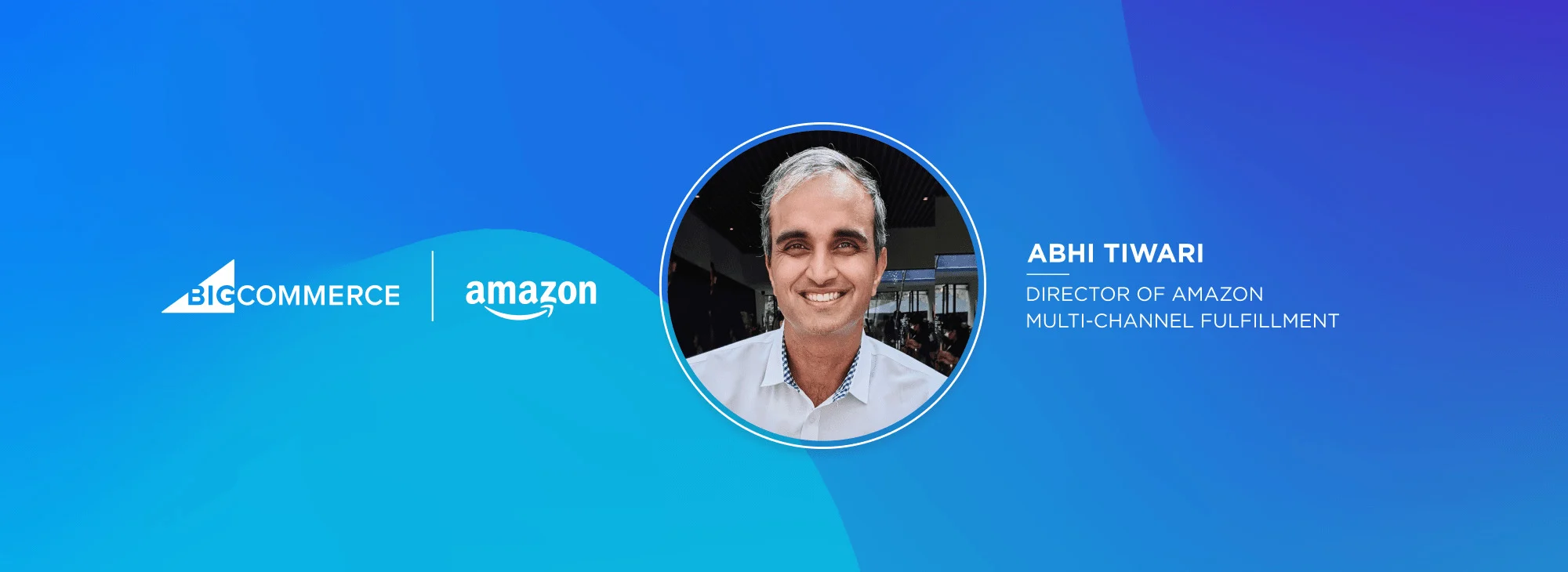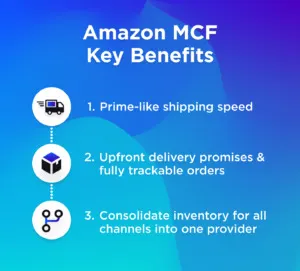Table of Contents
Improving the Customer Experience with Amazon MCF for BigCommerce: Q&A with Amazon’s Abhi Tiwari


Improving the Customer Experience with Amazon MCF for BigCommerce: Q&A with Amazon’s Abhi Tiwari
Get The Print Version
Tired of scrolling? Download a PDF version for easier offline reading and sharing with coworkers.
A link to download the PDF will arrive in your inbox shortly.
As consumers increasingly expect fast shipping when purchasing online, it may come as no surprise that Amazon surpassed FedEx in the number of packages delivered in 2020 — 4.2 billion compared to FedEx’s 3.3 billion.
The logistics giant also expects to be the largest package delivery carrier in the US by this year. Amazon continues to invest in its fulfillment and logistics network so it can offer customers 2-day and 1-day delivery, every day of the week.
To optimize and grow your online sales, Amazon and BigCommerce have partnered to bring Amazon’s best-in-class fulfillment solution to BigCommerce US-based merchants. For small and medium-sized businesses, this is a significant opportunity to get your shipments to your customers quickly and efficiently while upgrading the customer experience.
The Amazon Multi-Channel Fulfillment app is brand new and available to BigCommerce merchants to download on the App-Marketplace. You can start streamlining your operations and offer an amazing customer experience to all your shoppers across your sales channels.
To learn more about Amazon Multi-Channel Fulfillment (MCF), we sat down with Abhi Tiwari, Director of Amazon Multi-Channel Fulfillment. Read on for Abhi’s answers to some of our most frequently asked questions.
BigCommerce Q&A with Amazon’s Abhi Tiwari
What is Amazon Multi-Channel Fulfillment (MCF)? Abhi Tiwari: “MCF is a program that allows you to fulfill ecommerce orders from any of your sales channels, whether you sell on Amazon or not.”
Why did Amazon create a MCF program? AT: “We noticed that many merchants are moving to a multi-channel strategy. For example, a merchant sold products on Amazon, now they are expanding to their own website as well as to other sales channels. We believe that in order for these merchants to grow overall, their customers’ experience needs to be elevated across all channels.
“Shipping speeds are a key element for great customer experience and developing a world-class fulfillment network that operates 24/7 requires significant investment, which many small- and medium-sized businesses aren’t able to incur.”
What is the difference between Amazon MCF and Fulfillment by Amazon (FBA)? AT: “Fulfillment by Amazon (FBA) allows you to fulfill orders placed on Amazon while Multi-Channel Fulfillment (MCF) fulfills orders on any of your channels including your own website.”

If a merchant is also selling on channels such as Wish, Instagram Shopping, etc. can they still fulfill using MCF? AT: “Yes, MCF is investing in a number of solutions to help merchants fulfill orders from any channel. We recently launched the ability to track orders across all marketplaces and have unbranded packaging in beta testing that merchants can join our waitlist to be added to the program. If merchants have questions about specific channels, they can contact us to set a call with one of our representatives.”
If you have inventory in Amazon’s warehouses in overseas markets, can you also use MCF in those markets? AT: “Yes, MCF is available in most countries where Amazon has operations including the UK, Germany, Japan, Mexico, Canada and Australia. We are excited to offer a truly global solution as merchants look to expand their business into new channels and countries.
Interested in learning more about Amazon MCF?
Discover how you can automate your fulfillment with MCF in just a few clicks.
First, find the Amazon Multi-Channel Fulfillment app in the BigCommerce App Marketplace. Then, install the app from inside your BigCommerce storefront and begin to follow Amazon’s simple setup process. If you don’t already have an Amazon account, follow the link in the setup process or contact Amazon to have an Amazon representative assist in the setup process and get you started with your fulfillment.

Elizabeth Hudson is a Content Marketing Manager at BigCommerce, where she specializes in content strategy and writing on all things for omnichannel marketing. She previously worked at IBM, focusing on content and product marketing.


